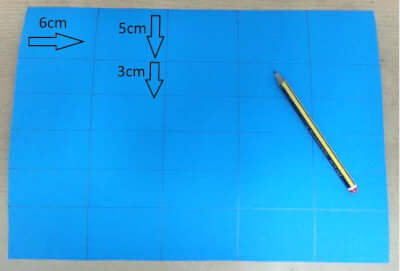Make your own Spanish Year Calendar
If the essential maxim for house hunters is 'Location, Location, Location' then surely it's 'Repetition, Repetition, Repetition' for language learners (check out a recent blog post we wrote about the value of repetition as a language learning tool).
Repetition need not be boring; it all depends on how it is done. And here's a great way to build repetition into your Spanish teaching schedule: a Spanish Year Calendar which can be used by the children themselves every school day.
Now the really cool bit. Before the children learn to say each day's date, using examples like the three shown later in this post, they make their own calendars in class.
The simplest way to do this is with 12 pieces of A4 card, each piece representing a different month of the year.
Step 1: Draw lines on the card in pencil. Four vertical lines of 6cm apart; and five horizontal lines, the first of which is 5cm from the top while the remaining four are spaced 3cm apart. Like this:

Step 2: Add the month, days of the week and corresponding numbers. Note that only the school days are included so Saturday and Sunday are missed out. Like this:

That's it. Simple! All the children need do is complete the process for all 12 months (use different coloured pieces of card if you have them), use a hole punch to make two holes a the top of each piece of card, then thread string through to hold the complete calendar together.
- How to practice Spanish using the calendar
Here's a list of the highly useful language which appears in the calendar:
Numbers 1-31: Uno, Dos, Tres, Cuatro, Cinco, Seis, Siete, Ocho, Nueve, Diez, Once, Doce, Trece, Catorce, Quince, Dieciséis, Diecisiete, Dieciocho, Diecinueve, Veinte, Veintiuno, Veintidós, Veintitrés, Veinticuatro, Veinticinco, Veintiseis, Veintisiete, Veintiocho, Veintinueve, Treinta, Treinta y uno.
Days of the week (Monday-Sunday): lunes, martes, miércoles, jueves, viernes, sábado, domingo.
Months of the year (January-December): enero, febrero, marzo, abril, mayo, junio, julio, agosto, septiembre, octubre, noviembre, diciembre
Note that months of the year and days of the week are not capitalised in Spanish.
For more about capitalisation in Spanish click here.
The ideal way to practice the numbers, days and months is to combine all three in a single sentence, starting with the Spanish word for 'today' (hoy). Here are three examples:
Hoy es jueves el siete de mayo - Today is Thursday the seventh of May
Hoy es viernes el doce de junio - Today is Friday the twelfth of June
Hoy es miércoles el dieciocho de febrero - Today is Wednesday the eigthteenth of June
Look how repetition is used here. The words 'Hoy es' always appear at the start of the sentence. They are followed by the day and the date. So what we are looking at is a great mix of same language followed by same structure. ¡Perfecto!
PS If you are short on time (and creative skills perhaps!) you could consider purchasing this excellent Spanish Fabric Calendar via Little Linguist. It includes all the necessary calendar-related language plus Weather and Seasons!

